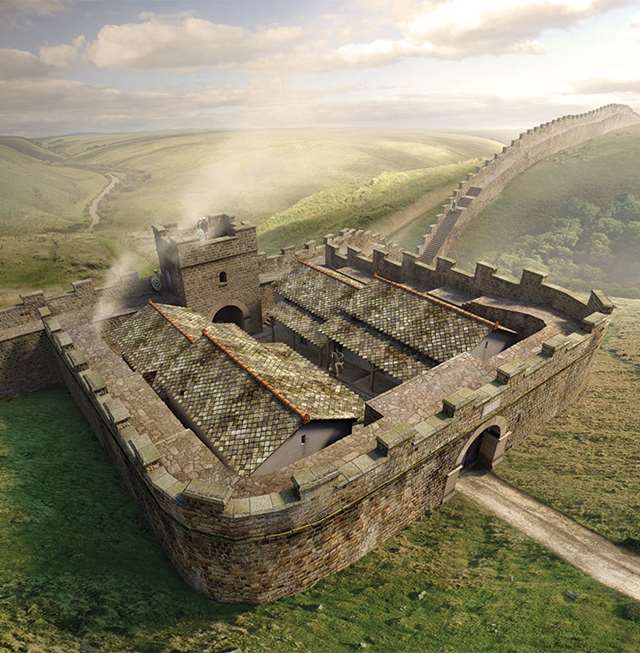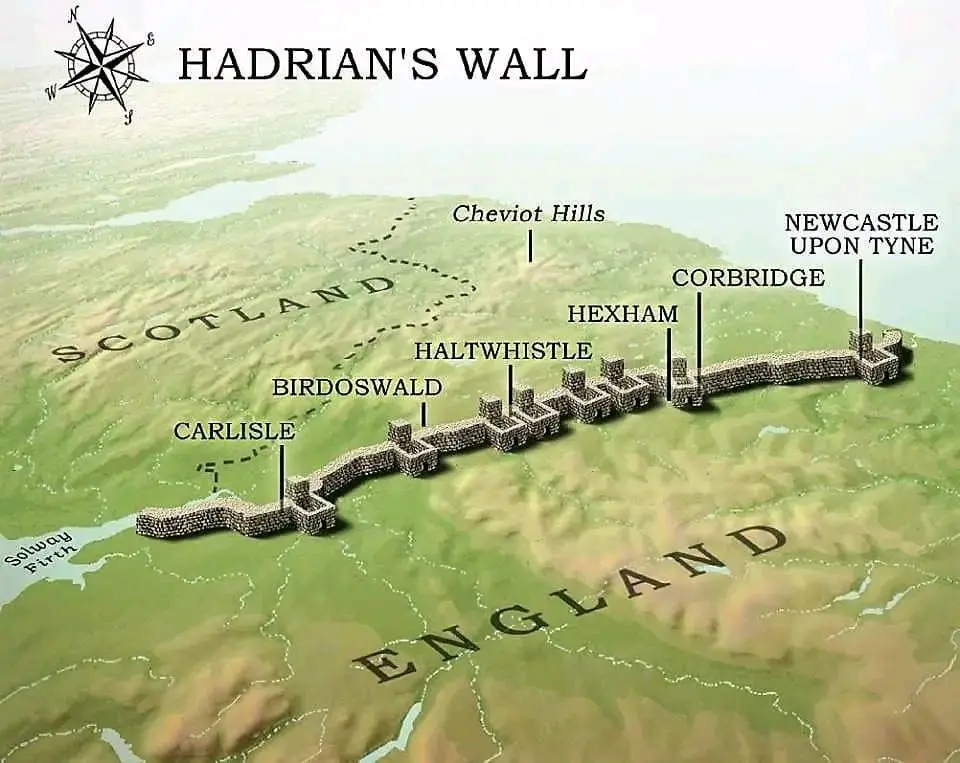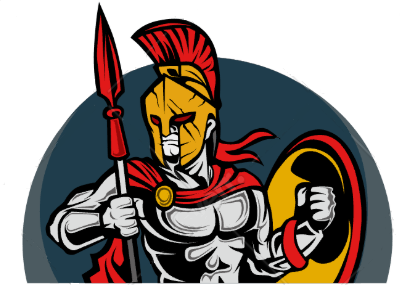Hadrian’s Wall stretches from the east to the west coast of northern Britain, spanning approximately 73 miles (118 kilometers). During his visit to Britain in 122 CE, Emperor Hadrian ordered the construction of the wall. It served both to control movement and to defend against invasions by northern tribes, while also demonstrating Roman authority and power. The wall was built using a combination of stone and turf, with milecastles placed every Roman mile, and additional turrets and forts strategically positioned. A deep ditch ran alongside the wall, serving as an extra defensive barrier.
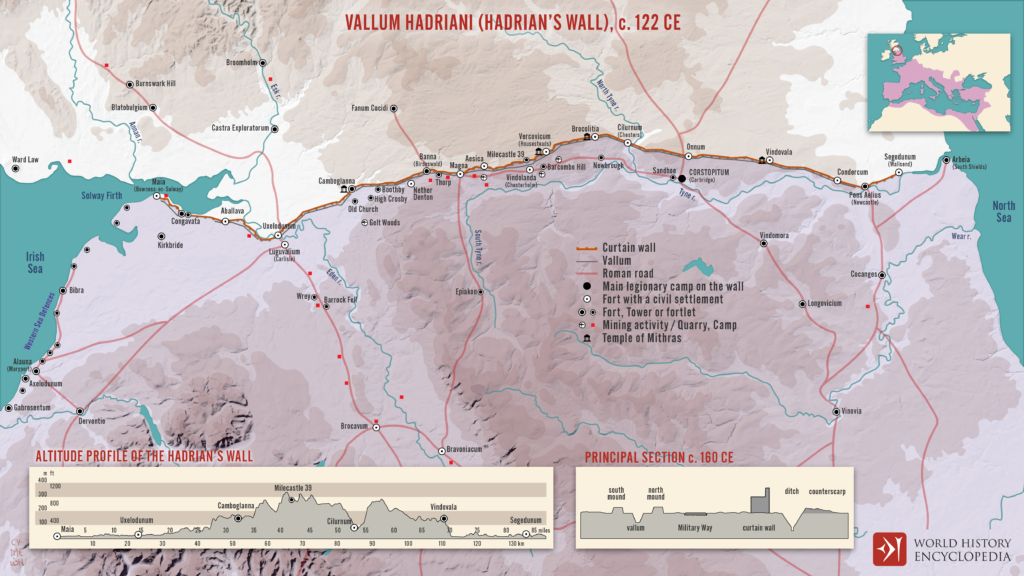
A map illustrating the span, structure, and context of the 73 miles (118 km) Hadrian’s Wall
Connection to the Decline of the Roman Empire
Hadrian, unlike his predecessor Trajan, focused on securing and stabilizing Rome’s existing borders instead of expanding the empire. Upon becoming emperor in 117 CE, he faced increasing challenges in protecting the empire’s vast frontiers. The construction of Hadrian’s Wall was a response to these challenges, signaling a shift from expansion to defense and stability. By the late 4th century, barbarian invasions, economic decline, and internal instability stretched Rome’s defenses thin, weakening its control over Britain. As a result, by 410 CE, the Roman administration and legions withdrew from Britain, marking the decline of Roman authority in the western provinces.
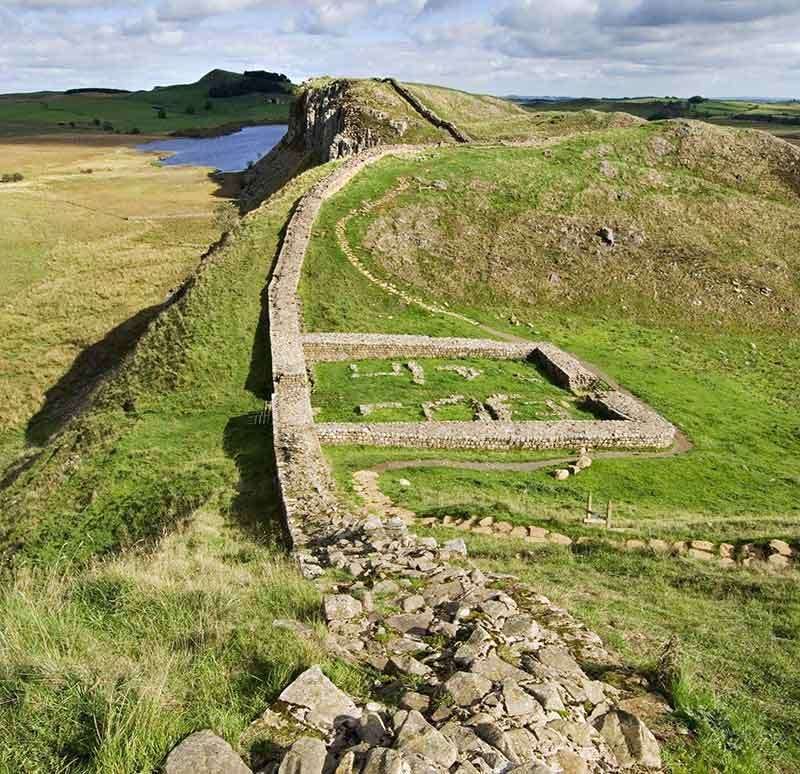
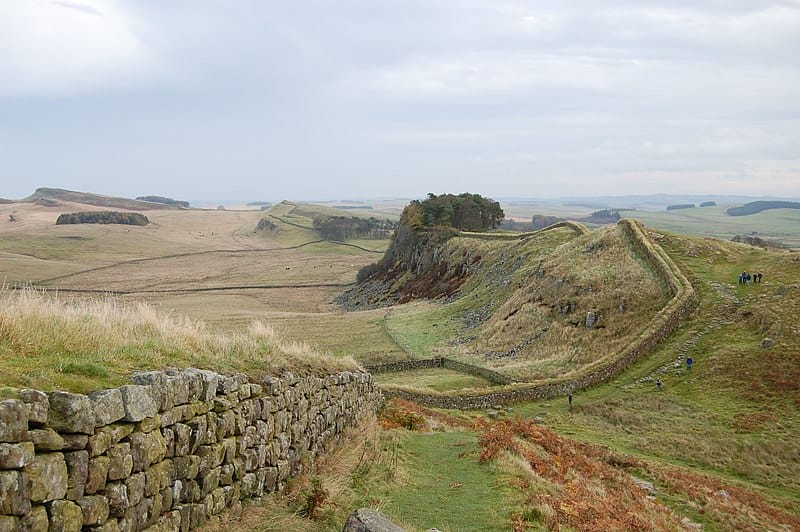
Continuity and Change
Hadrian’s Wall continued the Roman tradition of securing the empire’s borders. Earlier emperors, such as Augustus, established boundaries using natural landmarks like major rivers, although these frontiers were not yet defined by continuous walls or fortified lines. Since Britain lacked such natural borders, Hadrian’s Wall was constructed to separate the “civilized” Roman colony from the “barbaric” tribes of the Picts to the north (modern-day Scotland). It’s the most heavily fortified border anywhere in the Roman Empire. Over time, Hadrian’s Wall became a vital part of the Roman Empire’s frontier system, marking its northernmost boundary. At its height in the 2nd-century CE, this defensive network extended over 5,000 kilometers and included key segments such as the Limes Germanicus and the Limes Tripolitanus.
Positive or Negative Changes/Continuities?
The wall was a relatively positive development for the Roman Empire, as it helped strengthen control over the region and provided a clear boundary to protect Roman Britain from northern incursions. It also served as a powerful visual symbol of the empire’s commitment to maintaining its authority in the area. On the negative side, the construction of Hadrian’s Wall also symbolized the growing need to defend Roman territory, which suggests that the benefits of imperial expansion were decreasing.


Rate of Change
The changes brought by Hadrian’s Wall were slow. The construction of the wall itself took several years, while the Roman military tactics evolved from offensive conquest to strategic defense and consolidation over several decades.
Turning Point:
Hadrian’s Wall can be considered a turning point in history as it marked a shift from Roman expansionism to a more consolidating approach, signaling the beginning of a period of gradual retreat and decline for the Roman Empire.


